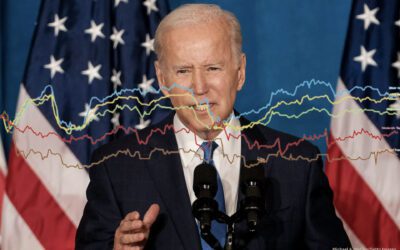The latest national likely voter survey for Democracy Corps has Obama back to his 49 to 46 percent lead, with 2 percent volunteering a third party candidate. There are only 3 percent undecided. While nearly all the other polls show a closer race, we have a lot of confidence in this survey.[1] When all is said and done, this may be the year when polling had to catch up to the rapidly changing ways people communicate. This survey is one-third cell phones and, as with all our likely voter surveys, it screens for participation and past vote, and the demographics reflect our conservative projection of likely voter demographics.
The President has reached 50 percent approval, and 50 percent now think the economy is improving, which may get him across the finish line. He is carried there by the immense partisan advantage Democrats have over Republicans, and the personal advantage he has over Romney, though that is much diminished, accounting for a closer race.
Romney is in play because of the 55 percent who say the country is on the wrong track; the personal economy that remains stubbornly stuck and tough; and his 4-point advantage on who would better handle the economy and 2-point edge on who has the better economic plans. The economy is still struggling – and not improving measurably at the personal level despite slight macro-economic gains in recent months.
Romney’s voters and Republicans are much more engaged in this election, which could make this race closer for sure, though our poll still shows Obama with a 2-point lead in a more conservative turnout model. Among Romney voters, two-thirds say they are following the election very closely, compared to 53 percent among Obama voters.
Confirming the web-test of last week, the actual progress/don’t turn back ad helps Obama with white non-college-educated voters in particular, key to the industrial Midwest battleground states. But the biggest challenge in the debate and closing weeks is engagement and consolidation of the broad Democratic base of 2006 and 2008 – the Rising American Electorate of unmarried women, African Americans, Latinos, and young people. He regained some of these voters after the second debate, but only with their turnout can Obama be sure of victory. They want change and respond strongly when hearing his plans for economic gains in a second term.
Mayor Rahm Emanuel and David Axelrod on Sunday both talked about the need to renew America after a decade of wars – with greater investment in rebuilding America, expanding education, protecting middle class retirement, and holding taxes down for the middle class but raising taxes on the wealthy to address the deficit. Those elevated plans for the future economy move the electorate – as demonstrated in this survey.
It is as though the President has a home field advantage going into the World Series. Heading in to tonight’s debate on foreign policy, Obama leads Romney on who would do a better job with “national security and foreign affairs” by a 5-point margin, 48 to 43 percent.
Key Findings:
- Democrats and Obama held up by favorability advantage. On our thermometer scale, the Democratic Party holds a net 12-point favorability advantage over the Republican Party. While Mitt Romney’s personal ratings have improved since his recent “47%” nadir, Barack Obama holds a net 9-point advantage over Mitt Romney. That personal edge is down from 53 points in our last survey, but still important.
- Half (50 percent) of all voters approve of President Obama’s performance.
- Obama has made real gains among white non-college-educated voters, a trend we have been tracking since July.
- Voters have grown more cautious about the consequences of spending cuts and want to protect Medicare in any deficit reduction effort. By a not-close 23-point margin (58 to 35 percent) voters agree that government should do everything possible to protect the middle class, Medicare, and Social Security, rejecting the argument that getting spending and deficits under control is a higher priority.
Closing argument
While the President has regained his pre-convention lead against Romney, Obama has not yet returned to 2008 levels among his base of unmarried women, youth, and minorities – the voters who gave the President and Democrats substantial margins in 2006 and 2008. In 2008, the President won 69 percent of votes among this group. He is currently earning just 62 percent—a margin that could mean the difference in this close election.
In order to sustain and improve his margin against the Republican challenger, Barack Obama will need to make the case to his own voters, who have not returned to 2008 levels and who remain less engaged than the electorate overall.
We tested the text and language of the Morgan Freeman ad, including further text from the President – describing progress, talking about challenges ahead, and concluding: don’t turn back. That genuinely helps with white non-college-educated voters and seniors – which is no small importance.
But to get the broad base engaged and consolidated requires the President’s future policy offer for growth in a second term, punctuated by a sharp contrast with Mitt Romney. This message is embodied in the campaign’s 2-minute ad and his opening of the second debate. It works as the closer and the goal of tonight’s debate, even if centered on foreign policy and national security.
Romney: 12 million jobs
Too many Americans are struggling to find work in today’s economy. Too many of those who are working are living paycheck to paycheck, trying to make falling incomes meet rising prices for food and gas. We need policies that will make things better for middle class families. We need a plan to create 12 million new jobs. Let’s take advantage of our oil, coal and gas reserves to become energy independent. Let’s lower tax rates for the middle class and small businesses, expand trade, crack down on China, and improve job training.
Obama: progress/don’t turn back
Every president inherits challenges. Few have faced so many. But because of the resilience and the determination of the American people, we’ve begun to fight our way back. Our enemies have been brought to justice and our heroes are coming home from war. Over the last 30 months, we’ve seen 5 million jobs created in the private sector and the auto industry has come roaring back. There are still challenges to meet, children to educate, and a middle class to rebuild, but the last thing we should do is turn back now.
Obama: future economic plans
As a nation we are moving forward again, but we have much more to do to get folks back to work and make the middle class secure again. Let’s create a million new manufacturing jobs and give tax breaks to companies that invest in America, not that ship jobs overseas. Let’s produce more oil, clean-coal, natural gas, wind and solar energy right here in America. Let’s prepare 100 thousand math and science teachers and expand student aid so more Americans can afford college. And let’s reduce the deficit by four trillion dollars over the next decade.
Among all voters, the policy narrative outperformed the progress narrative by 4 points and was more favorable in intensity than Romney’s spot. It shifts intensity, the vote and who is better for the middle class. But most important, it moves the new Democratic base back to 2008 levels, particularly unmarried women.
See our graphs for the full story.
This memo is based on a national survey of 1,000 likely 2012 voters, conducted October 18-21, 2012 by Greenberg Quinlan Rosner for Democracy Corps. Unless otherwise noted, margin of error= +/- 3.1.




